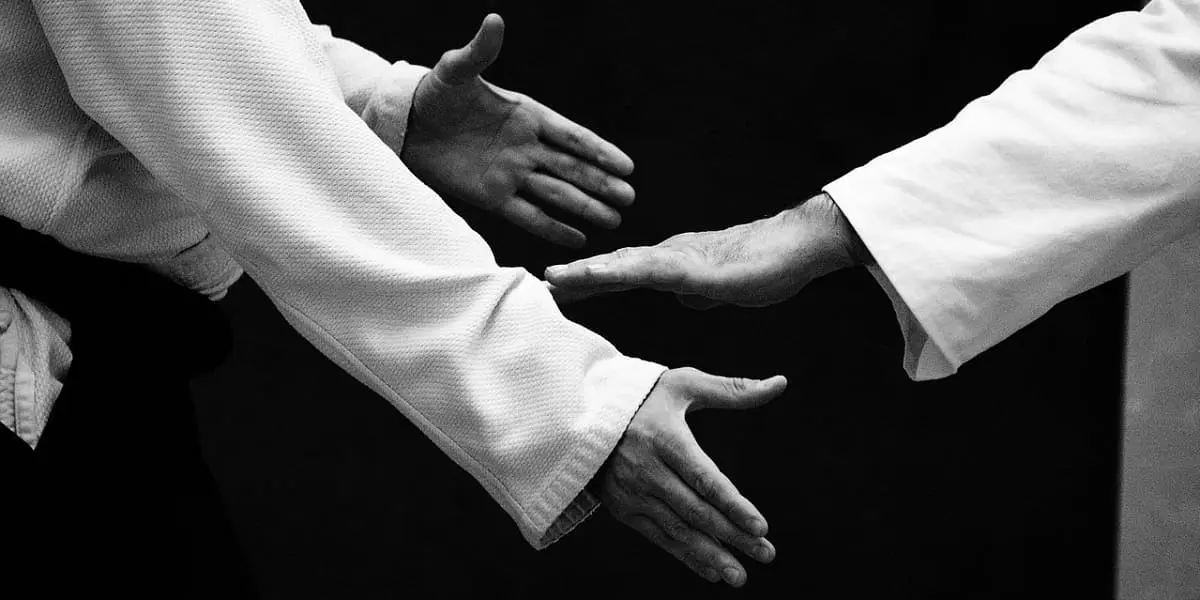Content
Definition: what is Aikido?
Aikido is a Japanese martial art that emphasizes the use of energy and movement against the opponent, rather than responding to force with force. The practice of aikido includes both armed and unarmed combat techniques.
Aikido was founded by Morihei Ueshiba in the early 20th century and is influenced by his spiritual and philosophical beliefs.
Aikido training focuses on developing physical and mental discipline, as well as learning harmony with others. There is no competition in aikido, the emphasis being on personal development and self-improvement.
Is Aikido a sport?
Aikido is a combat sport that defends non-violence by using the opponent’s strength. Aikido is practiced according to the physical possibilities of each one, the goal being to know oneself better, thus the practice of Aikido is accessible to all: women, men and children and at any age.
What are the benefits of Aikido?
Aikido is a Japanese martial art that has both physical and mental benefits. Like any martial art, the beginning of the training starts with a general greeting, as a sign of respect between all the practitioners.
On the physical level, the practice of Aikido allows to work on balance, strength, limb tone, reaction speed, reflexes and cardio. It solicits the abdominal belt, the gluteal muscles, favors joint and muscular flexibility, and improves the back muscles to prevent back pain.
At the mental level, Aikido helps to channel energy, improve concentration, self-confidence and self-control. It also favors the evacuation of stress, the management of emotions and allows to better react in tense situations.
Finally, true to the teachings of Morihei Ueshiba, Aikido also allows one to acquire certain moral values such as courage, politeness, modesty, perseverance, respect for others and humility.
What are the contraindications of Aikido?
The contraindications to the practice of Aikido are identical to those of any sport in general and there is therefore no specific prohibition.
How to learn Aikido?
To learn Aikido well, one must of course go to a club or a dojo. The training must be done in a room, on a tatami, under the supervision of a teacher. This non-violent martial art also requires a particular outfit and specific equipment.
Practitioners wear an Aikidogi, which is the top of the outfit, which also includes a black skirt, a belt and sandals.
For armed training, practitioners can use a wooden sword or bokken, a wooden stick or jo or a wooden knife or tanto.
Learning Aikido allows one to master the 10 fundamental principles:
- The correct positioning of the feet or Hanmi
- The supports on the ground and their transmission by the body or Kokyu
- Harmony and control of time and space or Awase
- To move in a circle and in a spiral
- Mastering and exploiting the leverage effect
- Punching and kicking or Atemi
- Shouting during the movements or Kiaï
- To master the techniques with bare hands or with weapons or Taijutsu and Bukiwaza
- To understand the whole according to the precept “think one / many
- To have the Budo spirit
The presence and the teaching of a qualified teacher are essential for a good learning of this martial art. That is why it is recommended to find a club, a dojo or a specialized school to learn this martial art.
At what age can we start Aikido?
Aikido is an educational discipline suitable for all ages and levels of practice. Aikido clubs generally offer specific classes for children, adults and seniors.
Aikido can be practiced from the age of 6-7 years old, or even 5 years old for some clubs. There are also different commissions within the aikido and budo federations.
However, it is always advisable to contact the local clubs for specific information on children’s classes and to discuss with the instructors how to adapt the practice to the age and level of each child.
Where to practice Aikido?
You want to practice aikido? Here are some tips to consider when choosing a club and a dojo.
First of all, it is preferable to go to a club affiliated to one of the approved federations such as the FFAB or the FFAAA. You can also choose a dojo or an association attached to a school or a trend. The main thing is to choose a reliable structure that offers quality teaching.
In order to put all the chances on your side and to maintain the regularity of your trainings, take into account the following points during your choice:
- The atmosphere and the general ambiance of the dojo
- The pedagogy and the degree of technicality of the instructor
- The facilities and equipment provided by the club
- The proximity of the club and its opening hours
- Discover also
- Fitness: what is Step?
